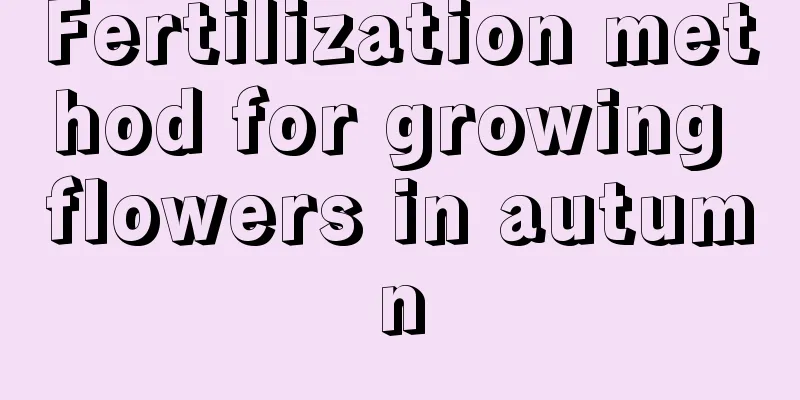Key points for caring for zinnia during its growth period

Zinnia growth period maintenanceZinnia seedlings need to be transplanted once they have 2 to 3 true leaves, and they should be planted in mid-to-late May. It is necessary to apply decomposed organic fertilizer when planting. When zinnia grows to about 15 cm in height, it is necessary to leave two pairs of leaves at the base and pinch off the top to promote the growth of axillary buds, allowing it to branch more and bloom more. After the flowers fade, they need to be cut off in time to reduce nutrient consumption and facilitate the next flowering. Water and fertilizer maintenance of zinniaWatering is necessary in a timely manner during the seedling removal period, and it is generally not suitable to water too much. But during the summer period, you need to water frequently to keep the soil moist. Otherwise, the leaves will turn yellow, the flowers will be small, the color will be poor, and the ornamental value will be greatly reduced. During the entire growth and development period, three applications of thin fertilizer are usually sufficient. During the seedling stage, chlorine and potassium mixed fertilizer is mainly used; during the bud formation stage, phosphate fertilizer is mainly used; in early September, chlorine, phosphorus and potassium compound fertilizer is applied once. If too much fertilizer is applied, the plant will easily grow too tall and fall over. When cultivating zinnia as cut flowers, you should choose tall varieties, do not pinch the tops of the plants during the seedling stage, and use the flowers at the top of the main stem for cut flowers. Because tall plants are relatively tall, their stems and branches are easily broken in strong winds, so supports need to be set up in a timely manner. In hot seasons, zinnias grow weaker, flower poorly, and do not produce seeds. Watering should be done frequently at this time, and red spider mites should be prevented and controlled in time. It will continue to grow and bloom after the beginning of autumn. Each time the flowers fade, the remaining flowers need to be cut off in time to reduce nutrient consumption and facilitate flowering again. At the same time, apply 1 to 2 times of fertilizer mainly composed of phosphorus and potassium. Do not plant continuously in the same field to reduce the occurrence of diseases. Maintenance of potted zinniasFor potted zinnias, you should choose dwarf varieties, choose loose, fertile and well-drained sandy loam as the culture soil, and sow the seeds directly. At the same time, not only do you need to water and fertilize reasonably, but you also need to pinch the top 2 to 3 times to encourage branching and more flowering. If managed properly, a pot of zinnia can have 10 to 20 flowers at the same time. |
<<: Diagram of cuttings of Rieger Begonia
>>: How to care for zinnia in four seasons
Recommend
Are hydrangeas the same as hydrangeas?
1. Hydrangea In fact, our name for hydrangea is n...
How long does it take for chive seeds to germinate after sowing?
How long does it take for chive seeds to germinat...
How to plant tulip bulbs
1. Time Selection In June, dig out the dormant bu...
How to grow Begonia
1. Breeding methods 1. Temperature and light: Whe...
How to plant longan seeds
The soil for planting longan seeds can be selecte...
Planting method and time of Polygonatum sibiricum What is the best time for transplanting?
Suitable planting time The planting time of Polyg...
Why doesn't Aspidistra grow new leaves?
1. Unsuitable temperature (1) Specific reason: Th...
What is the most beautiful and easy-to-grow camellia variety?
Camellia, also known as camellia, is a general te...
Grafting method of yellow jasmine
1. Select rootstock and scion When grafting, you ...
Can I grow bamboo in my shop?
Can I grow bamboo in a shop? Bamboo can be plante...
Cultivation methods and precautions of large-leafed green radish
1. Soil It is best to use slightly acidic soil fo...
Cultivation methods and precautions of variegated vines How to propagate variegated vines
Variegated vine is an ornamental plant that is pa...
Is it profitable to plant sea buckthorn? What is the profit per mu?
Is it profitable to grow sea buckthorn? Sea buckt...
What is the best month to plant Oxalis?
Oxalis Planting Time It is best to sow Oxalis in ...
How to water the thick skin
Tips for cheeky watering The thick-skinned plant ...









